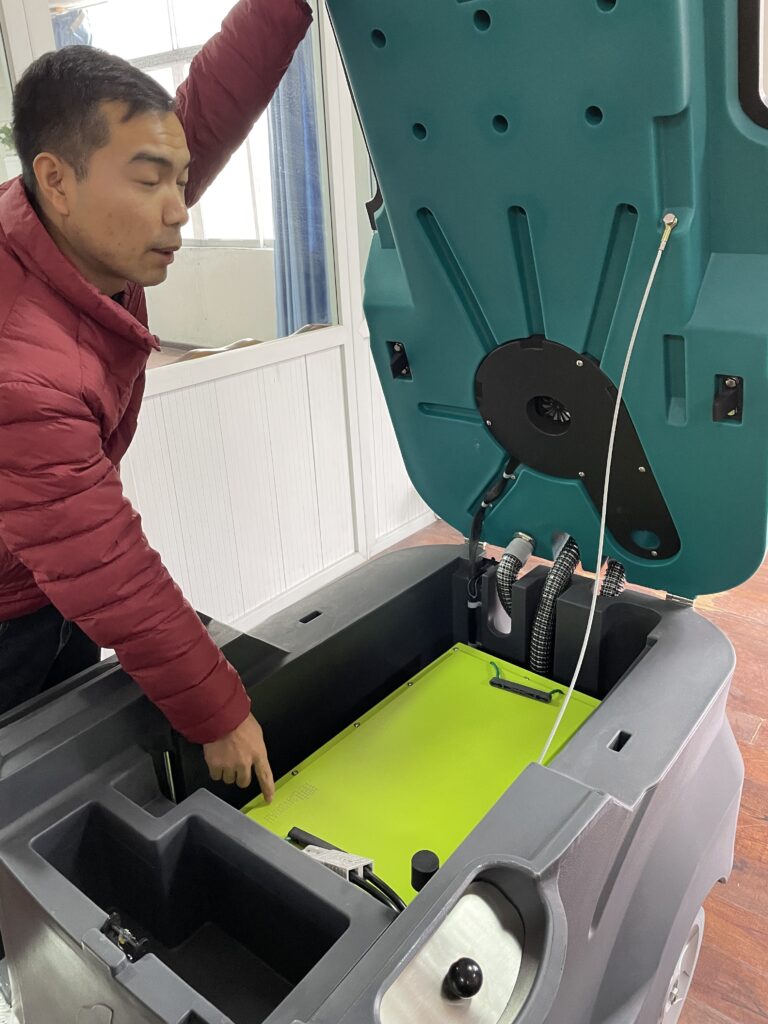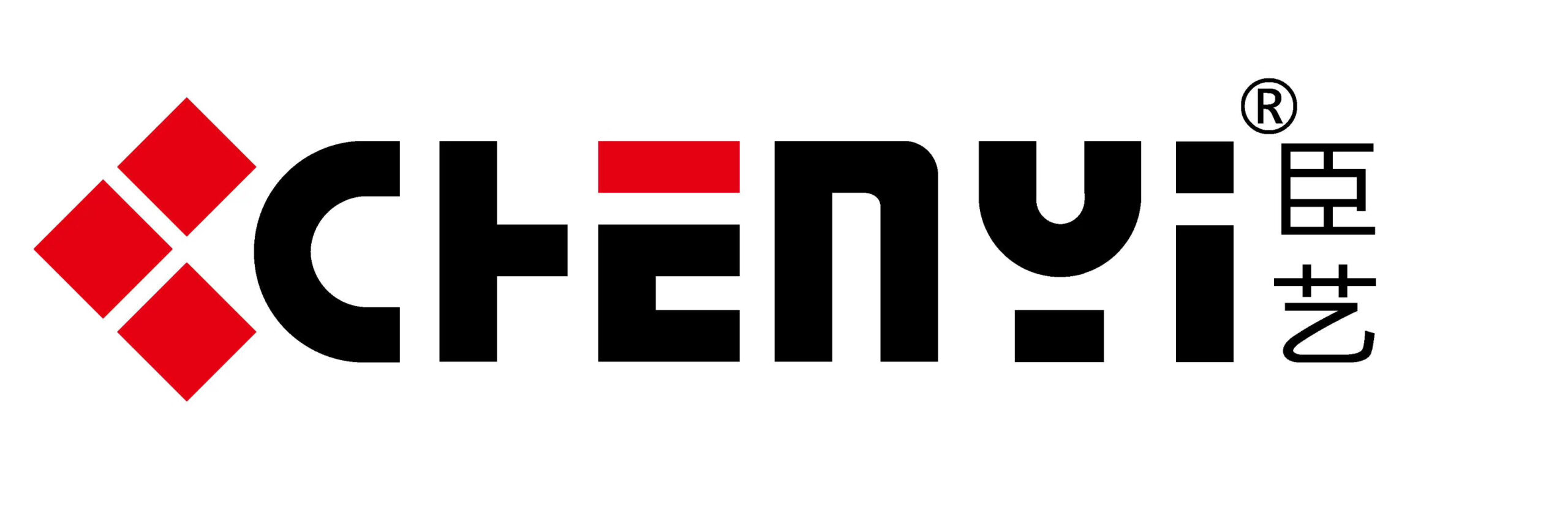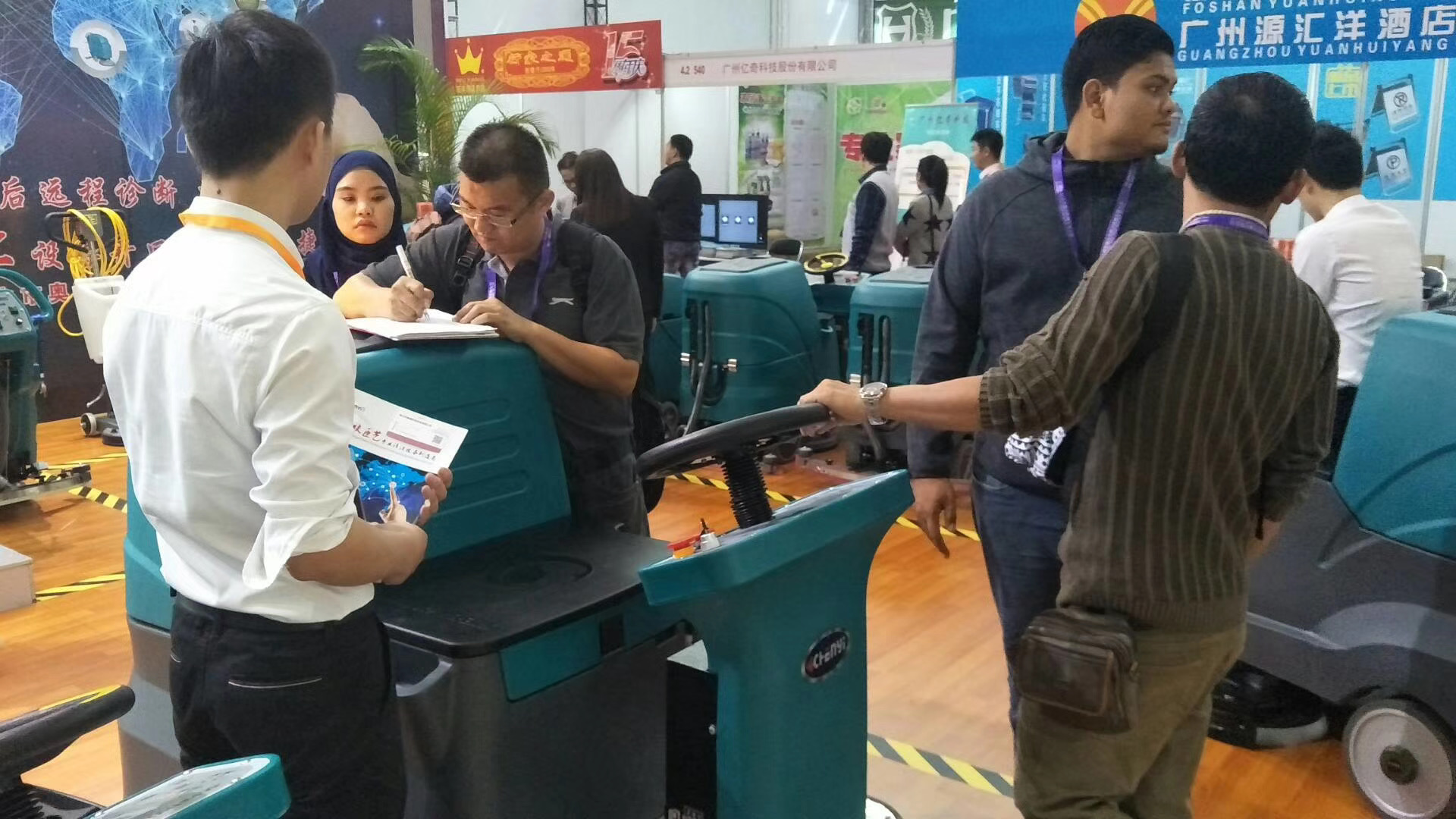Hey guys. Ms. Amazon Vivian here.
Today let’s talking about Everything you need to know about the batteries of your floor scrubbers – Part I
The floor cleaning industry has long been in the business of operating floor scrubbers and sweepers that rely on battery power to keep equipment running.
Some of the most popular machines are battery-powered, because they can boost worker productivity by 30% or more when compared to cord electric equipment. They also allow the operator to clean beyond the length of a cord or without being restricted to the nearest outlet.

What are the different types of batteries?
There are four main types of batteries for janitorial cleaning equipment: wet flooded, AGM, GEL, or lithium-ion.
Most battery powered cleaning machines use either Flooded (Wets) or maintenance-free (Gels or AGM).
We would not recommend Wet battery for most applications because of this added dimension. Wet batteries need regular topping up with distilled water. If you don’t check them and they get low, this will again damage them and affect performance.
There are two kinds of lead acid battery constructions:
No 1. wet flooded (Lead Acid)battery
Wets will have screw caps on the top. It requires more maintenance than other lead-acid batteries. Flooded cells, sometimes called “wet batteries”. These are the lowest cost type of battery. These also need to be maintained by monitoring and filling the battery cells with distilled water. There is a trade-off between battery cost and maintenance cost. Flooded batteries have removable vent caps for adding distilled water( I then emphasize using ONLY distilled water). Only use distilled water after the charge cycle is complete check all battery cells often as part of your regular maintenance schedule, It is critical to add distilled water only after the charge cycle is complete.
The battery in a quality automatic floor scrubber should be inspected several times a month.
When your battery begins to fail, you can give it more juice by Filling the port with distilled water during the charging cycle. You must monitor the water level at all times. If the water flows out of the battery, the acid will ruin your flooring.
How to properly maintain wet flooded batteries?
Wet flooded batteries require the most maintenance out of all types of batteries. They need to be “watered” weekly. The plates, which produce power, must always be fully submerged in the battery’s electrolyte and water mixture to function properly. Always check the battery before charging. Open the vent cap to see if the plates are covered with water. If the plates are not covered, fill the battery with distilled water to ½ inch below the bottom of the cap to cover the plates. If you overfill the battery, the batteries will leak liquid from the caps when charging. The acidic solution that leaks can be harmful to your machine and dangerous for the operator. It is important to use distilled water with a low pH. High pH or water with impurities can damage the battery. pH should measure between 5 and 7 to reduce the likelihood of battery damage.
It is critical to the life of a wet flooded battery that they are properly maintained. If they are not properly maintained throughout their life, they will have to be replaced sooner than expected, ultimately costing you more in the long run.
Never add your own electrolyte to the battery.
Wet flooded batteries must also be charged in an open, well-circulated area. They release toxic hydrogen gas. This gas must be able to escape which is why some refer to this type of battery as vented cell battery. Wet-flooded batteries are not able to store or recombine the gas like other rechargeable batteries, so it must be released externally.
No. 2 Valve-regulated lead-acid (VRLA) batteries
LEAD ACID BATTERIES: Industry guidelines show that lead acid batteries should be charged after each use of 20 minutes or more. It is best to charge them overnight and make sure the charger shows the battery is fully charged prior to using again.
Valve-regulated lead-acid (VRLA) batteries are a type of liquid electrolyte battery.
VRLA batteries do not require the regular addition of water to the cells and are commonly referred to as ‘no maintenance’ batteries.
There are two types of VRLA batteries: AGM and Gel.
No.2-1 AGM Batteries

AGM (Absorbent Glass Mat) Batteries. These batteries are maintenance-free. These batteries are sealed, so the cells don’t need to be monitored or filled with distilled water. Just plug in the charger when the machine is not in use.
AGM batteries are sealed lead acid type batteries. AGM battery stands for absorbed glass mat. The absorbent glass mat refers to a fine fiberglass mat inside the battery that soaks up or “absorbs” the sulfuric acid in the battery.
Requiring no maintenance, AGM batteries typically last longer than wet-flooded batteries that are improperly maintained. They most commonly break down due to lack of maintenance or error.
These batteries cost a bit more to manufacture, so they cost more. Typically, the money saved in maintenance labor will offset the additional cost.
How to properly maintain AGM batteries?
Unlike wet flooded batteries, sealed AGM batteries do not require any water to be added to them. Sealed AGM batteries are safe to be charged in any area without the discharge of fumes. To keep these batteries in good condition, make sure they are regularly charged.
The most common mistake that users make with AGM batteries is forgetting to charge them. These batteries are sensitive to undercharging and opportunity charging.
No2-2. Gel Battery
Gel and AGM batteries are commonly mistaken for each other. Both are VRLA batteries and are both spill proof and maintenance-free.
Similar to AGM batteries, Gel batteries do not require weekly watering and are considered maintenance-free. Gel batteries do not have liquid electrolytes. A gel battery uses a sulfuric acid that has been mixed with fumed silica to create a gel-like substance. The substance is a pliable solid, so it doesn’t leak.
How to properly maintain Gel batteries?
A significant difference between gel and AGM batteries is the charge and discharge rates.
Gel batteries can handle slower, or longer discharge rates than AGM batteries.
Similar to AGM batteries, the most critical maintenance component of Gel batteries is ensuring proper charge and discharge. When AGM and Gel batteries are confused, Gel batteries can suffer. Gel batteries are extremely sensitive during charging and require a specific Gel charger to avoid damage to the gel-like substance.
Gel and AGM require a specific charger that will slow down the charge cycle to prevent overheating. They take longer to charge than a wet flooded battery.
AGM and GEL Lead Acid batteries are both considered to be “low” maintenance batteries as they do not need water added to the cells. However, these two types of lead-acid batteries take longer to charge and can be easily damaged by opportunity charging. The best way to maintain them is through proper charging. Lithium-Ion batteries are also considered “low” maintenance as there is no adding water or periodic discharging.
Pro Tip: Most battery chargers are automatic and fully charge the batteries without overcharging.
No.3 Lithium Ion Battery

Lithium ion batteries are spill proof and maintenance free, but they use a chemical compound, typically lithium cobalt oxide or lithium iron phosphate, to charge.
Lithium-ion batteries, or Li-ion batteries for short, have lithium ions that bounce back and forth between the cathode and anode of the battery during charge and discharge. Lithium-ion batteries are all about the movement of lithium ions. In short, when the battery is charging, the ions move one way and when it is providing power the ions move the opposite way to supply power.
The increased cost of a lithium battery can be offset by the number of times it can be recharged.

Lithium-ion batteries will also reach a full charge more quickly when compared to Gel, AGM, or wet flooded batteries.
As noted earlier, lithium ion batteries are sensitive to extreme temperatures, however, they are some of the fastest charging batteries on the market, and longest lasting. The charge/ discharge cycle of lithium ion batteries is between 2000-5000 cycles (depending on the battery) compared to 200-500 cycles for lead acid batteries. (Longest Life, General Charge Cycles Range Between 880-1500)
Finally, it is also in a smaller size and lighter weight, but the bad thing is it’s difficult to dispose.
How to properly maintain lithium ion batteries?
To preserve the life of lithium-ion batteries, it will be critical to properly maintain the batteries during every charging procedure. They are especially susceptible to heat.
Lithium ion batteries have several components that degrade over time. Store the batteries in low temperatures and always allow the battery to cool down after charging before using it again.
Additionally, lithium ion batteries are not negatively impacted by “opportunity charging,” making them even less maintenance and easier to care for.
PROPER CARE DURING DOWN TIME: prolonged downtime can reduce the life of all batteries after a certain period. In the worst cases, 7-10 days may already be enough to kill a battery, depending on the charging level before it was left idle and the cleaning machine it might have been connected to If batteries will have a prolonged idle time it is important to make sure they are fully charged. However, leaving them on the charging station is suggested. This way, if power is turned off, and then back on, the battery can not advised.
The best way to prolong the life of lithium-ion batteries is also through proper charging techniques as they can be sensitive to heat due to the movement.
Lithium types and sealed batteries do not off-gas” so you will not smell anything as the batteries are charging, but should still be treated as a wet cell battery, and charged in a well-ventilated area.
How much does a wet flooded / AGM / GEL / lithium ion battery cost?
The cost of batteries is dependent on the type, size, and manufacturer: It is said: “the costs for a new battery are between $375-$3,750 (300-3,000 GBP) depending on size and type.” Important things to note when figuring out initial costs are the expected life of the battery, number of charges, and disposal. Even though a battery may have a lower price point initially, the long-term care, durability, and disposal of the equipment could end up costing more than a battery that costs more upfront. For example, lithium-ion batteries are some of the most expensive batteries on the market but, due to the length of their charge cycles, they do not need to be replaced as often, and there is very minimal maintenance involved—thus they can be more cost-effective.
Wet flooded batteries have a lower initial cost when compared to AGM, Gel, or lithium-ion batteries, but they require more maintenance which can increase labor costs. The cost of wet flooded batteries depends on the manufacturer and size of the battery.
AGM batteries are about double the price of wet flooded batteries but require less maintenance. For example, if for a wet flooded battery that costs $300, a comparable AGM battery would cost about $600
Gel batteries are slightly more expensive than AGM batteries. Using the same example as above, if a wet flooded battery costs $300, a comparable AGM battery would cost about $600, while a Gel would cost about $750.
Lithium batteries are by far the most expensive. They can be as much as double or triple the price of wet-flooded batteries, but offer the operator the increased convenience of no maintenance and a long battery life.
The cost of replacing 1 or 2 or 4 or 6 batteries can be at the low end of $100 up to and a common charge of $2,000. Batteries will eventually give up, they will stop accepting charges and die. At some point, this $100-$2,000 replacement cost is inevitable, however, why speed up the process of replacing batteries in 6 months when they should realistically last 2 to 2-1/2 years with proper maintenance. The industry we are in is slowly moving away from flooded/wet cell batteries and moving more towards a safer, less maintenance sealed battery, and now more prominent, lithium-type batteries. With the use of wet cell/sealed, such as AGM and gel/lithium types there is no longer the excuse that the batteries were not watered. Yes, the cost of a sealed battery is more upfront, and lithium is dramatically more, but in the long run, they pay for themselves in longevity. –
Regardless of the battery’s type, also we can see the battery-powered Scrubber Dryers cost enough in the first place. Replacing batteries in your floor scrubber or sweeper can be expensive. With the right maintenance program, you can make sure you’re getting as much out of your battery pack as possible.
How Long will Lead-Acid Batteries Last in a Cleaning Machine?
The useful life of a battery pack will depend on how it was maintained and how much runtime you need 。when you’re cleaning. If the batteries are well maintained and charged regularly you can expect about 500-700 discharge charge cycles from a battery pack. For typical applications, that’s about 18 months of useful life.
Generally, scrubber batteries last 4 or 5 years that were properly maintained and not heavily used. Most quality floor scrubber batteries, if used daily, will last 2 or 3 years. They will go longer than that but the run time quickly goes down. The key is proper maintenance.
However, when 12 months in and the run time on the machine begins to drop off. Your staff starts is telling you that “The machine is not running long enough to do the job” “The machine will only run for a few minutes and then the batteries are dead.” Why is this? Can’t they make batteries that last longer than 12 months?
This is a hard one to accept but, it is probably you or your staff that are killing the batteries!
WHY is that? Let’s briefly discuss charging frequency. Batteries need to be exercised. They don’t like to sit fully charged (or uncharged), and not be used. If they sit, they succumb to a process called sulfation (another subject for another story) which basically kills the cells inside the batteries. Batteries can accept a rough range of 500-700 charge cycles before they just won’t charge anymore. A charge, whether 30 minutes, 8 hours or 1 week is still considered a charge cycle.
What Kinds of Things Will Reduce the Battery Pack’s Useful Life?
Anything that causes “sulfation” of the battery plates will reduce the battery’s capacity. Sulfation is when crystals of lead sulfate build up on the battery plates. The more sulfation that occurs in a battery, the less capacity the battery has to power your cleaning machines. Some causes of sulfation are avoided by how we’ve designed our machines, other causes can be avoided if you follow some simple rules.
Not end and let’s going on next week for the same topic.
Looking forward to your comments, and follow us to learn more about cleaning solutions every day. As always, our slogan is we only make The Reliable Scrubbers as Dark Horse as our logo image. #Cleaning Machines Supplies #Commercial Cleaning Equipment #Cleaning and Hygiene Service Provider











